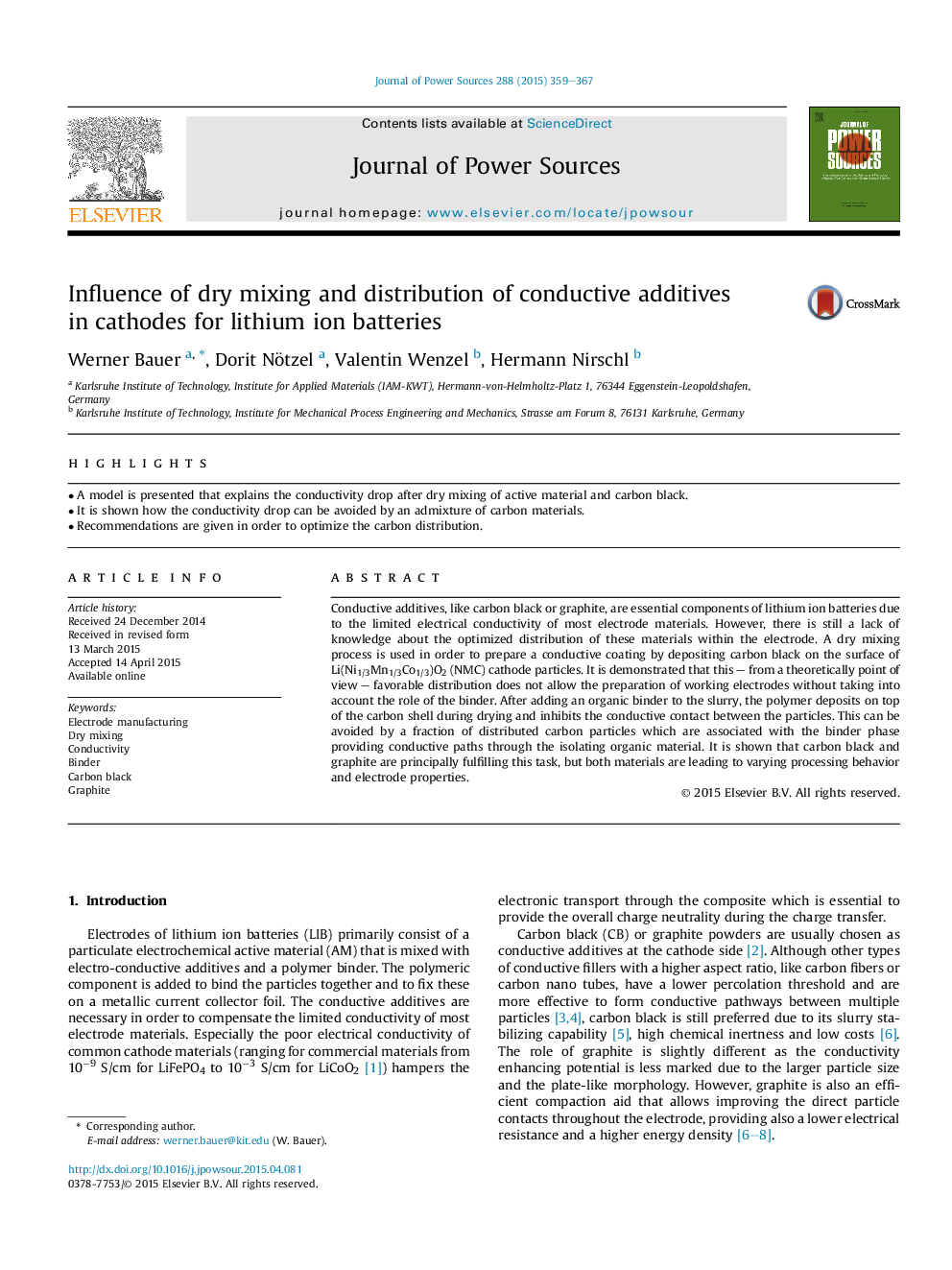| Article ID | Journal | Published Year | Pages | File Type |
|---|---|---|---|---|
| 7732259 | Journal of Power Sources | 2015 | 9 Pages |
Abstract
Conductive additives, like carbon black or graphite, are essential components of lithium ion batteries due to the limited electrical conductivity of most electrode materials. However, there is still a lack of knowledge about the optimized distribution of these materials within the electrode. A dry mixing process is used in order to prepare a conductive coating by depositing carbon black on the surface of Li(Ni1/3Mn1/3Co1/3)O2 (NMC) cathode particles. It is demonstrated that this - from a theoretically point of view - favorable distribution does not allow the preparation of working electrodes without taking into account the role of the binder. After adding an organic binder to the slurry, the polymer deposits on top of the carbon shell during drying and inhibits the conductive contact between the particles. This can be avoided by a fraction of distributed carbon particles which are associated with the binder phase providing conductive paths through the isolating organic material. It is shown that carbon black and graphite are principally fulfilling this task, but both materials are leading to varying processing behavior and electrode properties.
Related Topics
Physical Sciences and Engineering
Chemistry
Electrochemistry
Authors
Werner Bauer, Dorit Nötzel, Valentin Wenzel, Hermann Nirschl,
